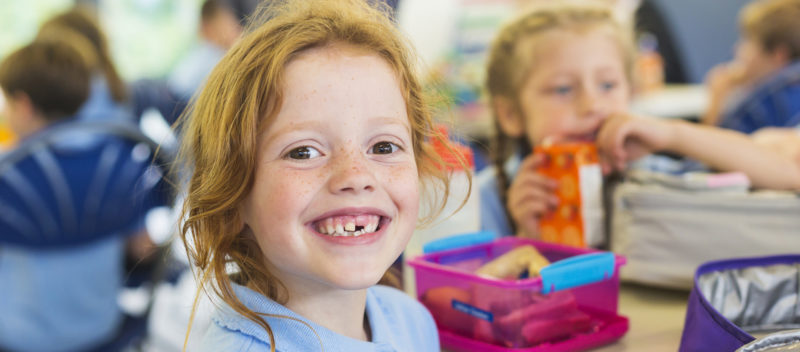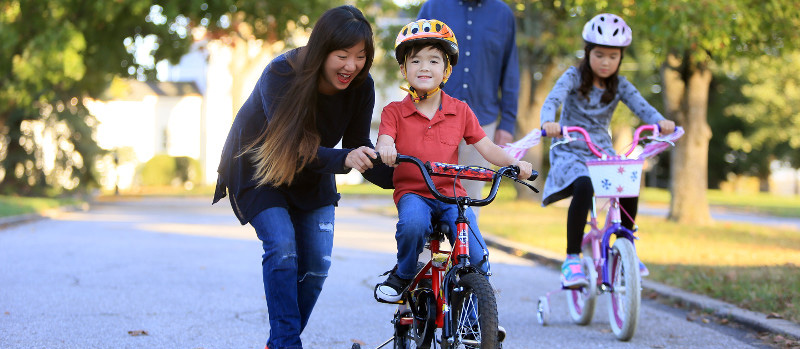As a dietitian in the Center for Better Health and Nutrition, parents often tell me that they spend a lot of time packing their kids’ lunches, only to find the majority of it coming back home.
This situation can be frustrating for parents. You want your children to have the nutrition they need to get through the day. But how do you get them to actually eat it? Is it possible to pack a healthy lunch that will get eaten and do it in a reasonable amount of time? I believe it is. Here are six tips to help you do it:
6 Tips for Packing a Healthy Lunch Your Kids Will Actually Eat
1. Make it fun
As with anything, kids are more likely to participate (and eat it!) if their lunch is fun. But no need to spend hours on Pinterest coming up with ideas. The simple ones should work just fine:
- Use cookie cutters to cut fun shapes out of sandwiches.
- Write an encouraging note.
- Add dip to their lunches! Kids love to dip and veggies with hummus or apple slices with yogurt are tasty and healthy combos.
2. Add a little variety
Kids love food presentation and variety just as much as adults do.
- Bento boxes are a great way to pack a bunch of colorful foods in one container. They’re also great for portion control.
- Homemade “lunchables” can keep their interest by assembling wheat crackers, pieces of turkey and reduced-fat cheese squares. Be sure to add fruit and veggies!
- Add a new spin to a favorite sandwich by using whole grain wraps, pitas, mini bagels and even lettuce in place of bread.
- Pack foods with different colors and textures to add variety.
3. Involve your kids
They’ll be more interested in eating something if they had a hand in picking it out and preparing it. Plus, they’ll learn about healthy choices along the way.
- Have your children pick out their own fun lunch boxes.
- Take them to the grocery with you and let them choose from healthy options.
- Let them help with packing by giving them age appropriate jobs, such as putting cut up fruit in a bag or container.
4. Make it nutritious
- Pack foods from at least three food groups: protein (low-fat lunch meat, peanut butter, reduced-fat cheese, beans, low-fat yogurt). A fruit or vegetable (or both!). And a grain (whole grain bread, wrap or crackers, low-sugar cereal, or popcorn).
- Avoid sugary beverages such as drink pouches and juices. Water and milk are the best choices.
- Limit “sometimes” foods such as chips and sweets.
5. Make it easier on yourself
Prepare foods ahead of time so that you’re not doing prep work five nights a week:
- Smoothies made with yogurt and yogurt tubes will hold up well if you freeze them overnight and let them thaw out for lunchtime.
- Sandwiches and wraps without the condiments can be made a couple of days ahead of time.
- Many sandwich fillings, such as peanut butter, will hold up well in the freezer and the bread won’t get soggy. Make a whole batch on the weekend. Use the University of Georgia’s website for more info on preparing and freezing foods.
- Pre-bag single-serve items on Sunday for the whole week (carrots, grapes, low-sugar cereal, bell pepper slices, cheese, etc.)
- Use the previous night’s dinner for lunch the next day. Pasta salad will hold up well. Make grilled chicken into a sandwich.
6. Keep it safe
- Use an insulated bag and freezer pack to keep foods at an appropriate temperature.
- If refrigeration is a concern, consider packing foods such as a piece of fruit or applesauce cup, raw veggies without dip, peanut butter, whole grain crackers, and low sugar cereal bars that are more shelf-stable.
- Remember to wipe out and gently clean lunch bags daily.
Keeping your kids well-nourished is important for health as well as academic success. Help your child develop life-long healthy eating habits by making meal planning and preparation a family affair!
To learn more about the Center for Better Health and Nutrition, or to schedule an appointment, call 513-636-4305.






I like frozen green grapes. They also work as little ice cubes.